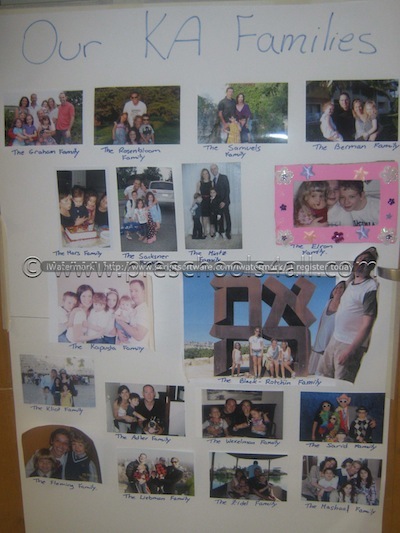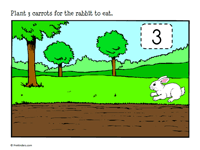Inclusive practice is good practice. What does it mean? Well, to us, preschool teachers, this means working with each child to help them build their self-esteem: listening to them, encouraging them to talk about themselves, and giving them the opportunities to express themselves. This also means asking the children to talk about how they feel, how they look, what they enjoy, who they are within their own family, what origins they come from, who their friends are etc.. This creates a sense of identity and belonging, which is exactly what Louise Derman Sparks highlighted in goal 1 of her Anti-Bias Approach.

Activities that allow preschoolers to discuss their emotions and better identify and read the emotions of others is a key aspect in building emotional intelligence at an early age, which in the long run, can assist children to grow into discerning adults that can relate to others effectively. Studies show that emotional intelligence is just as important (if not more important) than intellectual intelligence in the workplace, so it is important for young children to learn how best to read the body language of peers as early as possible. Here is a list of what can be done in a classroom:
Emotion collage: with the help of their parents, children can select photos of themselves in various state of emotions. Once you get the photos, scan the hotos onto printer paper so that the child can cut ou their image and paste them onto a large sheet of construction paper. The children can present to the class what emotions they were experiencing in each photo.
Picture cards showing different emotions. use them at circle time and ask the children to pick one of them and explain to their friends why they have picked this one. Some may pick the "sad" picture card and explain that their mam didn't let him finish their picture this morning because Mam was rushing to work. This may seem trivial to us but this i a big deal for a 4 year old!!! You can buy these cards anywhere really, but you can make your own too!!
Encouraging children to share their family life with their peers in the setting make them feel included too. Practitioners can then gradually build on that sense of self and belonging and help the children feel that they are also part of the setting's community, and eventually part of a community out in the world. Having a "family wall" which celebrates "who we are" is a good starting point. Ask the children to bring photos of their parents and siblings and other members of their family as well as pictures of people who are important in their lives (not just blood relatives).
 |
| (Picture borrowed from Preschool4all) |
 |
Here you have a facililty who created a Friendship Wall...
|
I have to admit that I have never thought about writing a post about our little family wall (we are a small setting!). Shame on me! I believe this is a brilliant way to teach children about what families look like and make them feel included, secured and valued. So there will definitely be a follow-up on this post, as far as I am concerned, next September with plenty of photos.
Some people may be asking themselves why it is so important for children to feel good about themselves. Simple. When you are starving and your belly rumbles and grumbles, can you honestly concentrate on what you are doing? All you think about is food!! Well, this is exactly the same about children. If their basic needs are not met, they can not learn. If a child feels isolated, excluded or not accepted, how can you expect that child to participate in class activities? He won't speak much, won't participate in class activities and will tend to withdraw because he doesn't feel that he belongs, Thus, hindering his learning progress.
Empowering the children is also part of bring an inclusive practice. Empowering supports positive attitudes, cooperative friendships, interactions and curiosity about the world. Empowering children again means listening to the children, respecting them and helping them to think critically. It is about helping children to make up their mind about what is fair or unfair. And it is very important at that stage to help them recognise differences and similarities around them. If children don't spot differences, children might then feel frighetened or angry later on in their young life. It is important also to let children know that if there are things that they don't understand, it's ok to ask questions and to inquire. For example, when children observe a peer with a disability or special requirement, they should feel free and at ease to ask why their peer is behaving a certain way. Staff can reassure them that sometimes, we all need a bit of help. The point is that children learn from one another as Montessori often stated. Children from mainstream backgrounds will learn from a child with a special educational requirements and vice versa. Nobody loses in the process. Everybody gains and moves forward. Some move forward a little bit slower than others. But we all move forward. That's what matters and that's the message children must get. Again, there are lots of activities to challenge the children, make them spot differences and learn to feel comfortable with diversity. For instance, at circle time, ask them to say something nice about the child sitting beside them: "I like Joe's hair, I like Susie's shoes, I like Robby's glasses" etc... Don't be surprised if one of them decide to say that he/she doesn't like his/her own hair. I will refer you here to one of the activities I did with my children at thebeginning of the year, called "The best part of me" during which I asked the children to think about a part of their body that they liked the most. Another great way to promote self-esteem. You could also decide to compare hands at circle time.
Ask the children to lay their hands flat on the floor and compare skin tones, nails, finger lengths, hands size, nail lengths etc...
The use of persona dolls is also becoming quite popular to challenge stereotypes and counter discrimination. Pesona dolls encourage children to empathise and solve problems the doll is experiencing. To enable the childrento bond with the doll and identify with it, the doll is given a persona (a name, personality, lifestyle, family, cultural background ..). Once they have been introduced to the doll, the children listen and react to stories woven around the dolls.
I knew this post was going to be quite long. So I will stop right here and will write the second part of his post later on. These are some of my recollections as I reach the end of my Equality and Diveristy course. I hope they inspire you too.....







































